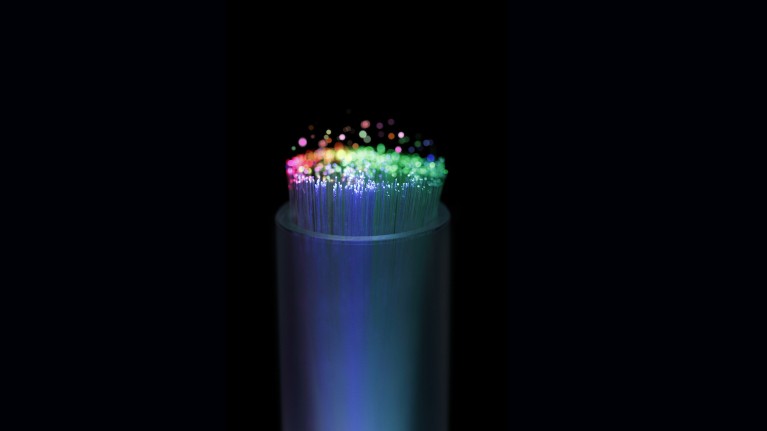
An optical fiber cable. Credit: Ivan Bajic/ E+/ Getty Images.
Transmitting quantum signals over long distances is one of the challenges of quantum communication. The most common strategy so far relies on the use of quantum repeaters, that function by exploiting a complex phenomenon called entanglement, rather than by copying and pasting the signal as a classical radio repeater would do.
Quantum repeaters are extremely expensive to build and until now their use has been demonstrated only in the very protected environment of laboratories, where suitably low temperatures and isolation conditions can be guaranteed.
Now a group led by Vittorio Giovannetti at the Scuola Normale Superiore (SNS) in Pisa has proposed an alternative or complementary approach that exploits the memory effects of an optical fibre to improve its transmission performances. The study has been published in Physical Review Letters1.
“The protocol we propose relies on the idea that the environment in which the quantum signals propagate and with which they interact can be modified by the signals themselves at our advantage”, Giovannetti says, “in other words, we can exploit the very characteristic that hinders communication along an optical fibre”.
“One can imagine the environment as made by two components” explains Ludovico Lami, an assistant professor at the University of Amsterdam, and an author of the study. The first is a local component, the coating of the cable, which interacts more closely with the signals. The second component is a global one, which interacts with the signals only through the local environment. “It could be the medium in which the cable is immersed, for example the ocean.”
In 2020 Giovannetti, Lami and other researchers demonstrated that there are peculiar states of the local environment that can trigger a phenomenon they called die hard quantum communication2. In this regime, the optical fibre can be nearly noiseless and exhibit a high transmission capacity, which is the ratio between the number of qubits that can be sent over the fiber and the number of times the fiber is used.
In the new study, the authors devised a protocol that can bring the local environment sufficiently close to those peculiar states so that the nearly noiseless regime can be achieved, says Francesco Anna Mele, PhD student at the Scuola Normale Superiore and first author of the study. “Before sending the signal that encodes the actual information, one should send a sequence of non-information-carrying signals” he explains. “This should allow to perform quantum communication even if the transmissivity is very low.”
Though counterintuitive, it turns out that the number of trigger signals needed decreases as the length of the fibre increases. “In the worst-case scenario of an arbitrarily long fibre, just two trigger signals are needed to achieve the result,” says Mele.
It is crucial that the trigger signals are sent at very short time intervals, or the memory effect of the local environment would be wiped out by the thermal interaction with the larger environment in which the fibre is immersed.
“The proposed protocol is very interesting as it draws attention to novel aspects of the dynamical preparation of the channel to be used for quantum communications,” says Paolo Villoresi, director of the Padua Quantum Technologies Research Center.
